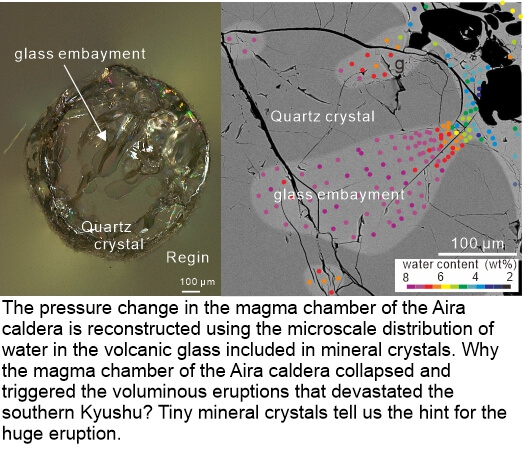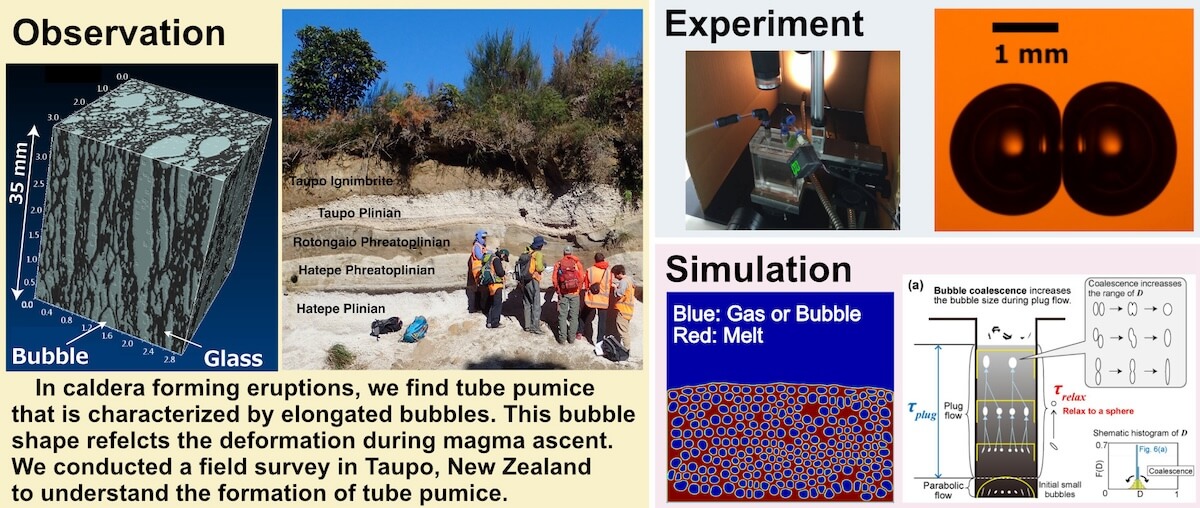
HOME / Departments / Earth and Planetary Sciences / Volcanology
Volcanology
-
- GESHI Nobuo, Professor
- OHASHI Masatoshi, Assistant Professor
- We promote research into the dynamics of volcanic activity driven by subsurface magmatic processes. From magma accumulation in the deep crust to volcanic eruptions on the surface, we study magmatic behavior and the physics that controls it. Our main methods for achieving these scientific goals are the geological and petrological analysis of volcanic products.
Dynamics of volcanic phenomena
Volcanic activity, from the ascent of magma from deep to the volcanic eruption on the ground surface, is a natural phenomenon that reveals the extremely dynamic activities of the solid earth, which is said to be "like a mountain that never moves”. Our scientific goal is to reveal the physical mechanisms governing the volcanic activity from geological and petrological approaches using physical and chemical theories. To understand volcanic activities, various processes associating with magma is necessary to consider. We are studying the following research topics.
Mechanism of magma storage, ascent, and eruption

Volcanic activities, from the underground processes to the volcanic eruption on the ground surface, are governed by the various physical interactions within the ground. We try to reveal the magmatic behavior and eruption mechanism with various approaches including the textual and chemical analysis in micrometer scale to the structural analysis over volcanic edifice or volcanic zone. When an eruption occurs, we reveal the eruption mechanism from the petrological analysis of the volcanic products. The information from the prompt analysis of volcanic eruption is important not only for scientific purpose but also for the hazard mitigation process. We also use same approach to the volcanic products of geological age to reconstruct the eruption mechanism of the past eruption as the present ones.
Observation, Experiment, and Simulation
Volcanic eruptions are basically complex physical phenomena governed by a wide range of physics such as thermodynamics, fluid mechanics, and elastic dynamics. In order to reconstruct the history of magma from volcanic products, it is necessary to carefully observe the erupted products and validate physical models from a broad perspective. In our laboratory, we are trying to understand the dynamics of volcanic eruptions by carefully observing the bubble and crystal structures of erupted products and modeling them based on experiments and numerical simulations.
Dynamics of bubbles

Like a well-shaken cola, the vesiculation of magma is the driving force for volcanic eruptions. Our group thus has focused on the dynamics of bubbles in magma. Using the number, size, and shape of bubbles preserved in volcanic pyroclasts, we have revealed the history of magma ascent from a magma chamber to a volcanic vent. We also have conducted analogue experiments using simple materials, such as corn syrup and silicone oil, because we cannot observe magma ascent directly. We have also performed numerical calculations to simulate the kinetics of vesiculation and crystallization in a volcanic conduit.